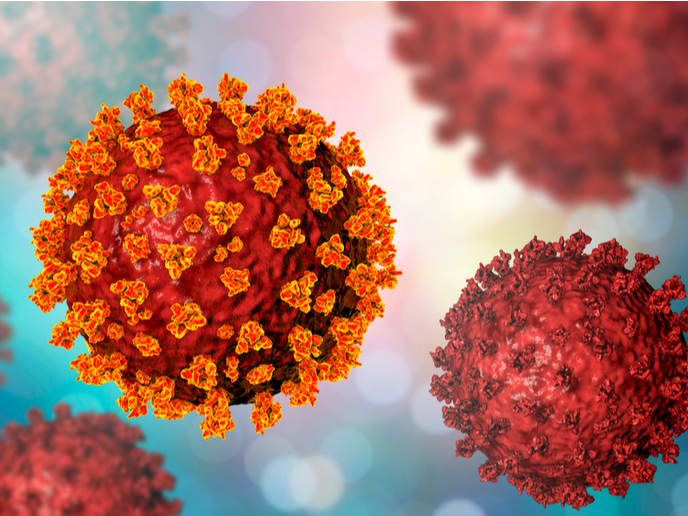New host protein points the way to possible treatment for COVID-19
The coronavirus currently plaguing the world has been able to infect humans so rapidly because of a viral protein called Spike. Spike, which covers the surface of the SARS-CoV-2 virus with crown-like projections (hence the name coronavirus), attaches to human cells inside the body and invades them. Scientists have found that to be able to do this, it binds to a host receptor protein called angiotensin-converting enzyme 2, or ACE2.
The new protein enhancing viral infection
A recent study partly supported by the EU-funded CHUbVi project has now identified another host receptor called neuropilin-1 (NRP1) that may be responsible for helping the rapid spread of SARS-CoV-2 in human cells. “In looking at the sequence of the SARS-CoV-2 Spike protein we were struck by the presence of a small sequence of amino acids that appeared to mimic a protein sequence found in human proteins which interact with neuropilin-1,” explained co-authors Yohei Yamauchi, Peter Cullen and Boris Simonetti of the University of Bristol, United Kingdom, in a press release(opens in new window) posted on the university website. “This led us to propose a simple hypothesis: could the Spike protein of SARS-CoV-2 associate with neuropilin-1 to aid viral infection of human cells? Excitingly, in applying a range of structural and biochemical approaches we have been able to establish that the Spike protein of SARS-CoV-2 does indeed bind to neuropilin-1.” The scientists studied the biochemistry of the interaction between Spike and NRP1. They found that by allowing the viral Spike protein to engage with it, NRP1 makes it possible for it to gain entry to human cells and is therefore responsible for significantly increasing infection. “Once we had established that the Spike protein bound to neuropilin-1 we were able to show that the interaction serves to enhance SARS-CoV-2 invasion of human cells grown in cell culture,” the co-authors noted in the same press release.
Drugs and antibodies blocking interaction
The research work led to the important discovery of inhibitors that are able to block the Spike protein from binding to NRP1. “[B]y using monoclonal antibodies - lab-created proteins that resemble naturally occurring antibodies - or a selective drug that blocks the interaction we have been able to reduce SARS-CoV-2’s ability to infect human cells,” Dr Yamauchi, Prof. Cullen and Dr Simonetti observed. “This serves to highlight the potential therapeutic value of our discovery in the fight against COVID-19.” Understanding how the Spike protein recognises human cells is a vital step in the creation of antiviral therapies and vaccines to treat the coronavirus disease. “To defeat COVID-19 we will be relying on an effective vaccine and an arsenal of anti-viral therapeutics. Our discovery of the binding of the SARS-CoV-2 Spike to neuropilin-1 and its importance for viral infectivity provides a previously unrecognised avenue for anti-viral therapies to curb the current COVID-19 pandemic,” the researchers commented. The findings(opens in new window) of the study supported by the CHUbVi (Ubiquitin Chains in Viral Infections) project have been published in the ‘Science’ journal. The 6-year project ends in 2026. For more information, please see: CHUbVi project(opens in new window)



